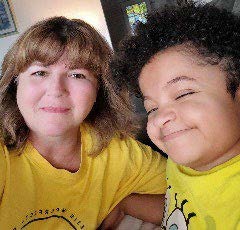
The May issue of E-News is here! Read about the OIF National Conference, research updates, and upcoming OIF Events at https://mailchi.mp/oif/may2024

The May issue of E-News is here! Read about the OIF National Conference, research updates, and upcoming OIF Events at https://mailchi.mp/oif/may2024
 The April issue of E-News is here! Read about the OIF National Conference, research updates, and upcoming OIF Events at https://mailchi.mp/oif/enews-april2024 !
The April issue of E-News is here! Read about the OIF National Conference, research updates, and upcoming OIF Events at https://mailchi.mp/oif/enews-april2024 !
With the help of Michelle Fynan, PhD, LMHC and Deborah Krakow, MD, the OIF has recently published a medically verified Sexual Health and OI factsheet. The Sexual Health and OI factsheet covers sexual self-esteem, common concerns, considerations, sexual health wellness checks, focus on pleasure and more. To read the new Sexual Health and OI factsheet, click HERE
We are pleased to share exciting news from our partners at Ultragenyx. They have completed enrollment for their Phase 2/3 Orbit and Phase 3 Cosmic studies. These studies evaluate setrusumab (UX143) in both pediatric and young adult patients with osteogenesis imperfecta (OI).
“We would like to thank the OI community for its support, trust and participation as we complete this important step in the advancement of the setrusumab program,” said Eric Crombez, M.D., chief medical officer at Ultragenyx.
For more information about the studies and what this development means for our community, please visit https://ir.ultragenyx.com/news-releases/news-release-details/ultragenyx-announces-completion-enrollment-phase-3-orbit-and

The March issue of E-News is here! Read about the OIF National Conference, research updates, and upcoming OIF Events at https://mailchi.mp/oif/march2024!
Dear Friend,
Greetings! Thank you for being an active supporter of our OI community! OI Foundation members make up the heart of our organization. As one of our dedicated supporters, we hope you will consider joining or renewing your membership for the 2024-2025 membership year. Our continued success is only possible due to your generosity and commitment to our mission – the future of the Osteogenesis Imperfecta Foundation depends on you!
Please consider becoming a member of the OI Foundation to continue the legacy of families and individuals living with OI determined to find answers.
OI Foundation Member Marnie Starkey shares why being a member of the OI Foundation is important to her and her family below.
 “We have met so many new friends through OIF events like the National Conference and Regional Support Group meetings. Being a part of the OIF allows us to not only benefit from programs and resources, but also allows us to help others with OI!” Marnie Starkey (member since 2019)
“We have met so many new friends through OIF events like the National Conference and Regional Support Group meetings. Being a part of the OIF allows us to not only benefit from programs and resources, but also allows us to help others with OI!” Marnie Starkey (member since 2019)
Your OIF membership will help provide medically verified information on OI to medical professionals, parents, caregivers, and individuals living with OI. It will give opportunities for people with OI to connect through the OIF website, social media sites, local support groups, and the OIF National and Regional Conferences. Lastly, it will accelerate the pace of OI research through scientific and clinical meetings and by funding new young investigator grants.
Take a moment to learn more about the four different membership levels below.
There are four different membership levels that include the following:
BRONZE – $36
• Exclusive OIF program update meeting
• Annual subscription to Breakthrough
• Voting privileges at Board Member elections
SILVER – $100
• OI Foundation drawstring bag
• Exclusive OIF program update meeting
• Annual subscription to Breakthrough
• Voting privileges at Board Member elections
GOLD – $365 ($1 per day!)
• OI Foundation drawstring bag
• Exclusive OIF program update meeting
• Annual subscription to Breakthrough
• Voting privileges at Board Member elections
• Complimentary ticket to an OIF fundraising event of your choice or a complimentary registration to an OIF Regional Conference 2024-2025
1970 Society – $1,000
• OI Foundation drawstring bag
• 1970 Society lapel pin
• Exclusive OIF program update meeting
• Annual subscription to Breakthrough
• Voting privileges at Board Member elections
• Complimentary ticket to an OIF fundraising event of your choice or a complimentary registration to an OIF Regional Conference 2024-2025 (does not include National Conference)
The OI Foundation owes its success to its loyal, supportive members; the organization’s future depends on you! I hope that you will consider joining the OIF or renewing your membership. Your membership enables us to continue offering the exemplary services we provide to all individuals affected by OI. Together, we truly do have an Unbreakable Spirit®.
Sincerely,
Tracy Hart
Chief Executive Officer
Please consider becoming a member of the OI Foundation by visiting www.oif.org/membership.
We need YOUR help to proclaim National OI Awareness Week (May 4 – 11, 2024) in every state!
To request a proclamation in your state, follow the steps below.
Alabama
Alaska
Arizona
Arkansas
California
Colorado
Connecticut
Delaware
Florida
Georgia
Hawaii
Idaho
Illinois
Indiana
Iowa
Kansas
Kentucky
Maine
Maryland
Michigan
Minnesota
Mississippi
Missouri
Montana
Nebraska
Nevada
New Hampshire
New Jersey
New Mexico
New York
North Carolina
North Dakota
Ohio
Oklahoma
Oregon
Pennsylvania
Rhode Island
South Carolina
South Dakota
Tennessee
Texas
Utah
Vermont
Virginia
Washington
Washington, DC
West Virginia
Wisconsin
Wyoming
If you have any questions, please contact Gabriela at gbeug@oif.org.
Applications are now available for the Edward D. Cranston College Scholarship 2024!
This scholarship, created in honor of OI Community Member Edward D. Cranston, is for students with osteogenesis imperfecta who are applying to or have been admitted to a college or university. Edward was born in 1962 with severe OI and challenged himself by pursuing all educational opportunities available to him to achieve his goal of working as a health care professional. He has dedicated his career to working with children with complex respiratory conditions and is currently held in high regard both by professionals in the field, as well as the families of the many children with whom he has worked.
Applicants must articulate a need for scholarship assistance to meet their academic goals, be committed to full-time college enrollment and show proof of enrollment in college to receive the funds. Preference for the scholarship is based on a combination of merit and financial need. Applicants are required to submit at least two letters of recommendation, their most recent official transcript, and a personal essay along with the application form.
Click here for the application.
All applications must be submitted by April 17, 2024. If you have any questions please contact Stacie at sconnors@oif.org.
The Jeanie Coleman Impact Grant Program provides equipment and services that improve the quality of life for families living with OI. The program is funded by the Children’s Brittle Bone Foundation (CBBF)
Items that have been awarded in the past include (but are not limited to) wheelchairs and ramps, hearing aids, technological devices (laptops, tablets), home adaptation, and accessible vans.
The next Impact Grant cycle will open in January 2025. If you have any questions please contact Stacie at sconnors@oif.org.